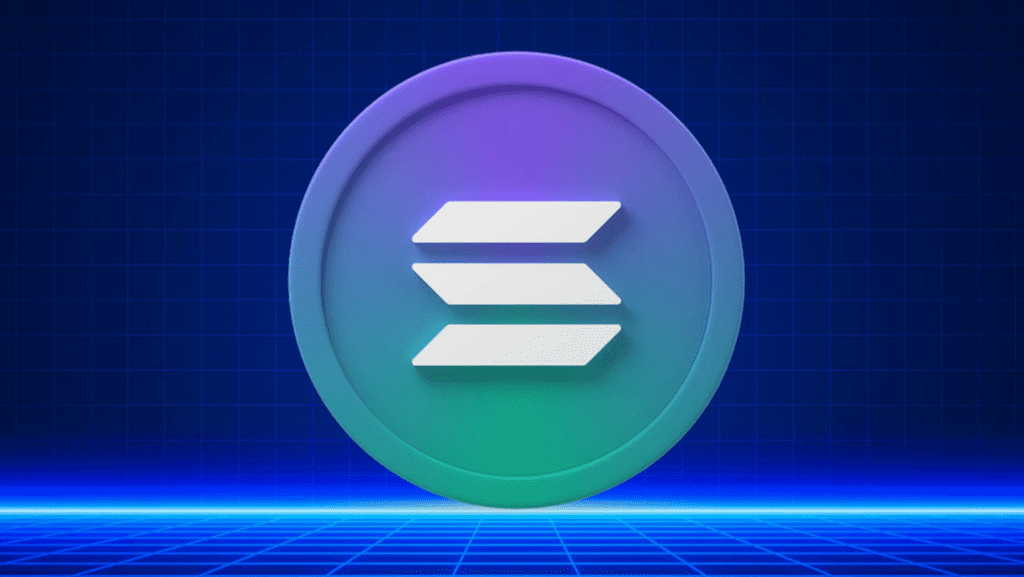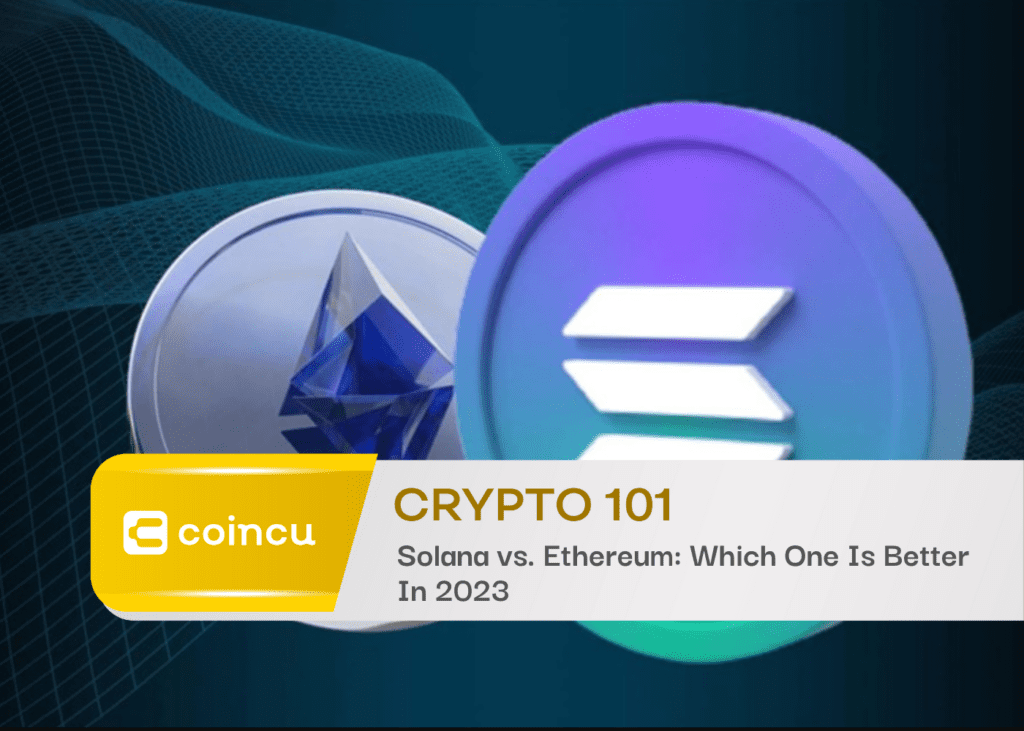The consensus mechanisms that Solana and Ethereum use are fundamentally different from one another. Proof of Work, or PoW, is the consensus mechanism used by Ethereum, which results in a less scalable but more decentralized network.

Proof of History, or PoH, is the verification method used by Solana. PoH is less secure than other methods, but it is more efficient, which results in faster and cheaper transactions.
What is Solana?

Solana is a high-performance, decentralized blockchain that was developed with the intention of facilitating the scalability of apps that are simple to use. It is believed that Solana has one of the ecosystems that is expanding at the quickest rate anywhere in the world, with thousands of projects spanning DeFi, NFTs, Web3, and much farther.
Transactions on the Solana blockchain are renowned for being extremely quick and inexpensive to complete. The scalability of Solana guarantees that the cost of each transaction will never exceed $0.01, and that the speed of each transaction will never exceed 400 milliseconds per block.
The Solana blockchain isn’t flawless, but neither are any other blockchains. The Solana network experienced three separate outages during the month of September 2021, with one instance seeing the entire system offline for approximately 17 hours as a direct result of a breach. In more recent events, a Solana bridge connecting to the Ethereum network was also breached, resulting in the theft of $320 million worth of assets. Having said that, when contrasted with the Ethereum blockchain, the Solana network does provide a few advantages of its own.
Breakdown of the Solana blockchain
A PoH consensus is utilized within the Solana network. By utilizing PoH, the Solana network is able to generate a historical record that provides evidence that an occurrence took place at a particular instant in time. PoH makes use of a cryptographically secure function that was designed in such a way that the output cannot be predicted based on the input and that the function must be correctly executed in order to generate the result.
Faster and more efficient business dealings
In point of fact, Solana is taking advantage of the slower network that Ethereum utilizes. By adopting a centralized network, which comes with a significant amount of danger for its customers as was discussed above, Solana is able to accomplish the efficient transaction speeds that it advertises.
The network utilizes a Tower Byzantine fault-tolerant (BFT), which eliminates the requirement for nodes to communicate with each other in real-time. As a result, the network’s overall efficiency is significantly increased. At the moment, the Solana network is able to process somewhere in the neighborhood of 50,000 transactions per second (TPS).
Improved Capacity to Scale
Solana is well-known for its increased scalability, in addition to the faster transaction speeds it offers. As the core of the Solana network is scalable, there is no need to implement layer-two solutions in order to improve the network’s capacity to handle more users.
The data is broken up into smaller bits by the technology that powers the Solana network, which makes it much simpler to move the data around inside the network. An additional technology known as Sealevel assists in the processing of transactions across several GPUs and SSDs. The combination of these two technologies results in a blockchain network that is both efficient and effective.
What exactly is the Ethereum?
Ethereum enables anyone, regardless of their history or location, to have unrestricted access to data-friendly services and digital currencies. It is a community that has developed the technology that underpins the cryptocurrency known as ether (ETH) as well as thousands of applications that many of us use today.
When compared to Solana, Ethereum is slower and more expensive for transactions; however, Ethereum more than makes up for this shortcoming with its advanced level of decentralization. Layer-two solutions help provide better scalability and throughput, which helps to compensate for the lack of scaling capabilities at the core of this blockchain’s architecture.
A breakdown of the Ethereum blockchain
Evidence of Job Done (PoW)
Proof of Work is the name of the consensus method that Ethereum makes use of (PoW). This mechanism makes it possible for the decentralized Ethereum network to reach a consensus (an agreement) by allowing one party to demonstrate to the other parties that a certain amount of a certain type of computational effort has been expended. This mechanism also makes it possible for the network to validate transactions. Because of this, users are prevented from spending ETH that they do not possess, and the Ethereum chain is protected from being attacked or manipulated in any way.
Intelligent Contracts
The smart contract capabilities of the Ethereum blockchain have garnered a lot of attention in recent years. It is able to support a range of programmability, which enables it to facilitate the development of a diverse range of intelligent contracts. The writing of these smart contracts is done in Solidity, which is the core programming language on Ethereum and is used for the platform.
Scaling
At the moment, Ethereum is only capable of processing between 13 and 15 transactions per second. Layer-two scaling solutions such as Polygon, Validium, and rollups have been introduced in order to address the scalability issues that exist on the Ethereum mainnet. Furthermore, after Etherum is improved, Ethereum’s developer indicated that transaction speeds may potentially go to as high as 100,000 transactions per second while still keeping the same level of security. This would be possible while still keeping Ethereum’s security intact.
NFTs It is likely that if you use Ethereum, you are familiar with at least the concept of NFTs. Ethereum was not the first blockchain to enable NFTs; nonetheless, it has been the most successful blockchain overall and is regarded as the blockchain of choice for NFTs because to its success with NFTs.
We are now in a better position to compare Solana and Ethereum now that we have gained some additional knowledge about each of these blockchains. We are aware that Ethereum is the alternative that offers the highest level of safety and decentralization, whereas Solana is the network that offers the quickest transaction times and the lowest transaction fees. But which one is preferable?
Which cryptocurrency, Solana or Ethereum, is better?
Your individual objectives should be taken into consideration in making a choice between Ethereum and the Solana blockchain. Do you favor a blockchain that has a higher transaction fee but provides a higher level of security? Or do you care simply about how quickly something can be done and how little it costs?
Choose Ethereum if you are looking to conduct business on the blockchain with the highest level of security. Since 2014, the Ethereum blockchain has been operational, making it the more mature of the two networks; as a result, it has had sufficient time to be improved. Use Solana if the only things that matter to you are how quickly transactions are completed and how little they cost. Solana was established in 2020 and is still working out the kinks in its operation, but it provides users with a more cost-effective alternative.
Which cryptocurrency, Solana or Ethereum, has more users?
If we didn’t compare Solana and Ethereum in terms of their level of popularity, this post wouldn’t be a genuine comparison piece.
As Ethereum’s current market cap is $353 billion and Solana’s current market cap is only $28 million, it is clear that Ethereum is the more popular option. Solana, on the other hand, has a market size of only $28 million. Additionally, the NFT sector favors Ethereum over Solana since the vast majority of blue chip NFT applications are currently living on the Ethereum blockchain. Solana is not as widely used.
In the end, both Solana and Ethereum have their own sets of advantages and disadvantages that they may point to. Hence, if you are having trouble determining which blockchain is perfect for you, the first thing you need do is ask yourself what your objectives are. If you are still unsure, it is best to test out both options.
DISCLAIMER: The Information on this website is provided as general market commentary and does not constitute investment advice. We encourage you to do your own research before investing.
Join us to keep track of news: https://linktr.ee/coincu
Chubbi
Coincu News





